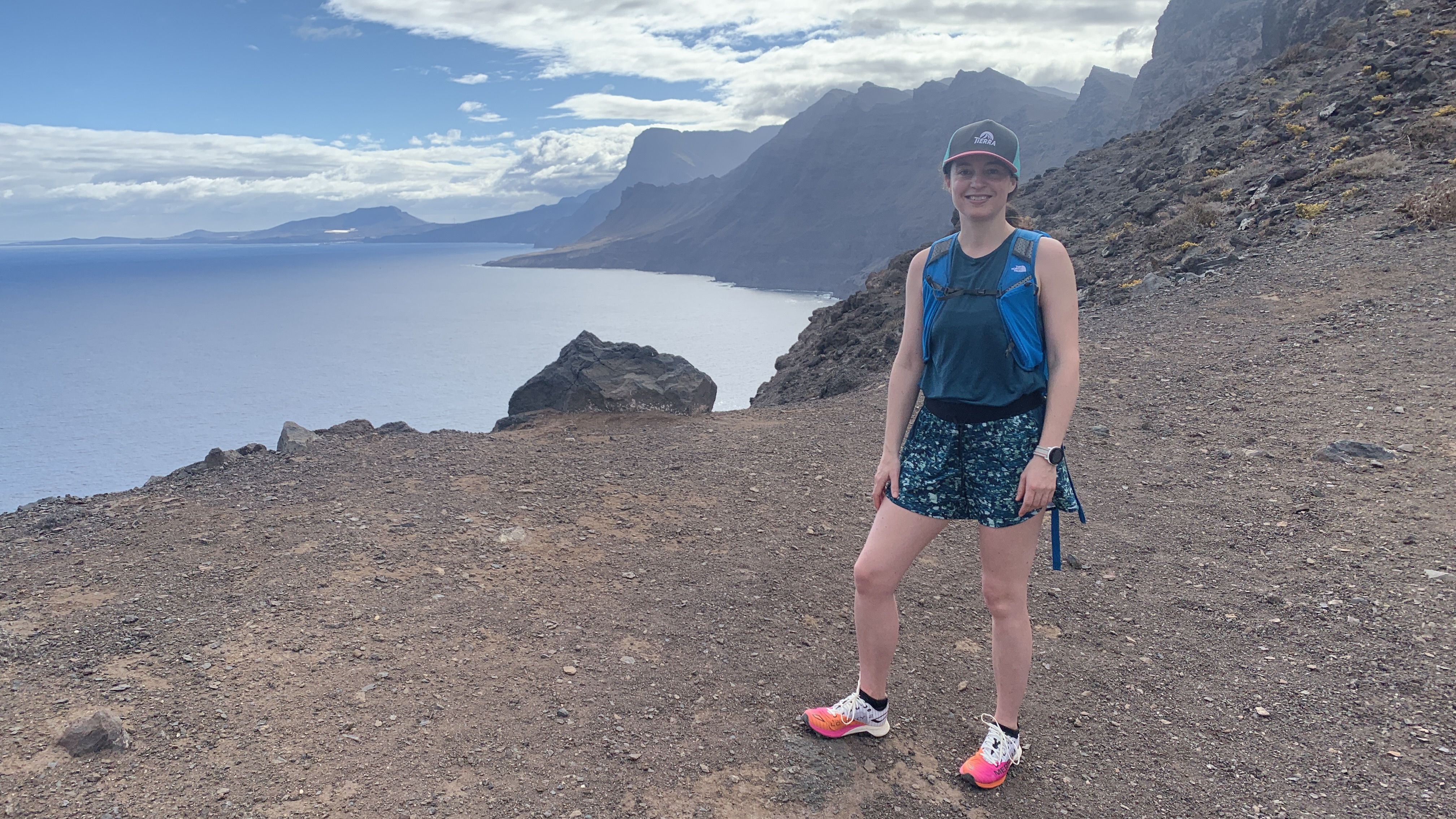Arriving at Roque Nublo, a 260-foot high monolith that sits atop a broad expanse of volcanic rock in the center of Gran Canaria, feels a bit like landing on the moon. From this viewpoint, panoramic views of the Tejeda Caldera reveal a wealth of geographical treasures: to the northeast, the lush, pine-covered mountains of Pico De Las Nieves. To the south, a glimpse of the famous Maspalomas Sand Dunes, a 400-hectare desert oasis.
To the west, on a clear day like today, the distinctive peak of Teide on Tenerife Island – the highest point in all of Spain. The iconic landmark that towers over me now is named “cloudy rock” because it is often blanketed in clouds that roll like a slow river over the nearby mountains. Today, however, there's an unblotted sky and I’m glad I dressed lightly in and breathable for the short but steep climb from El Garañon, an outdoors camp that sits at 5,577 feet above sea level and serves as a base for outdoor adventurers.

Roque Nublo is the tallest of several rock towers along the rim that remained standing when a volcano that formed the island collapsed in on itself some 15 millions years ago. The large basin stretches from this central point down to the Atlantic via the westernmost tip of the island. Gazing down there now, I can see the point where I stood less than 24 hours ago after in Parque Natural de Tamadaba where the arid landscape suddenly drops off into the glittering ocean via dramatic cliffs where foamy waves crash below.
I’m q.
















